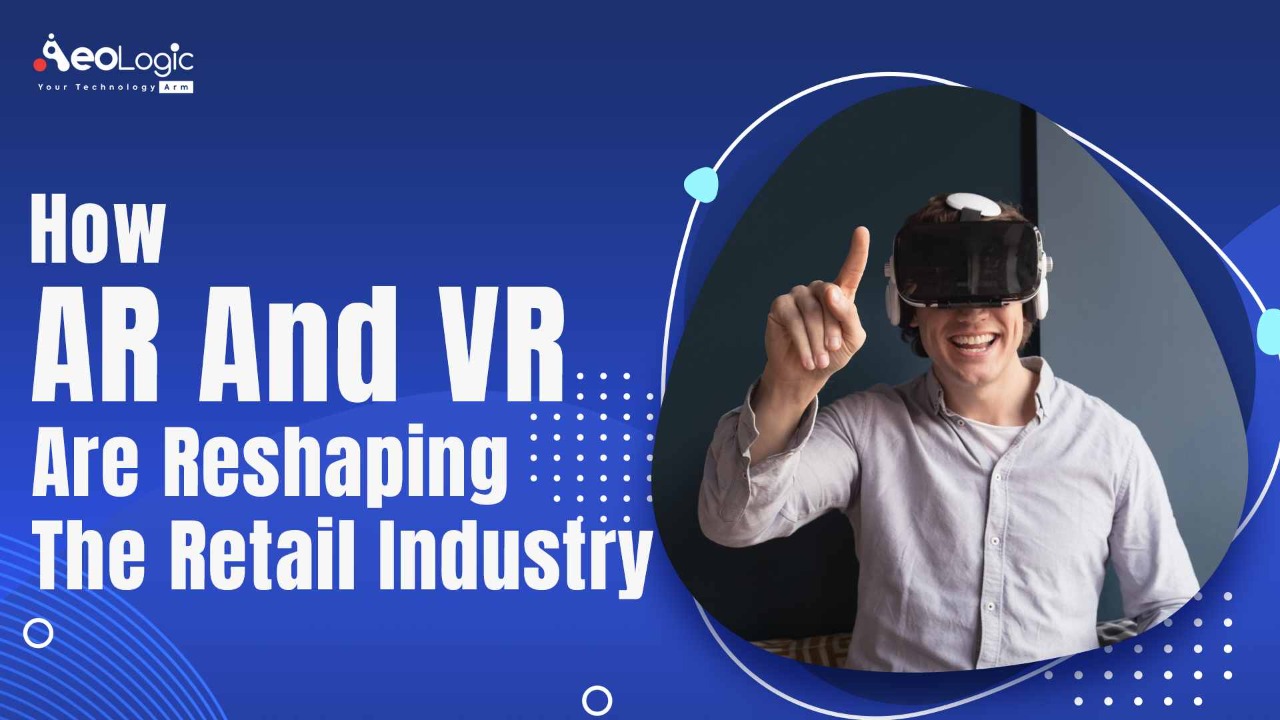The retail industry is one of the prime industries and an important segment in the backbone of the global economy. Augmented Reality (AR) and Virtual Reality (VR) in the retail industry are beginning to make bigger profits. In this ever-changing retail world building new customer experiences that are unique and memorable. This article will focus on how AR and VR are reshaping the retail industry. Moreover, businesses are distinguishing themselves through technological hybridizations to charm their consumers in innovative ways.
Basically, the application of AR and VR in the retail industry helps sellers and consumers have an improved buying experience. All while minimizing operating costs for retailers. Although the spread of VR and AR in the retail industry is not confined to physical retailers. Altogether, the real estate, healthcare, BFSI, and eCommerce giants are getting into the game as well.
AR and VR are set to change the market space and the shopping experience. A Goldman Sachs report stated that the AR/VR market in the retail industry will reach $1.6 billion by 2025. Statistics display that two-thirds of internet users would be interested in virtual reality. Whilst 63% said such technologies would change the way they shop.
Brands using AR and VR
I have researched a few big brands which are implementing AR and VR to offer an engaging customer experience. Let us have a look at them.
1. IKEA
It has formed an interactive and high-definition showroom that incorporates the fascinating power of VR. It offers a groundbreaking 3D product experience. The brand has launched an AR Catalog App. It enables users to observe how certain objects of furniture would look in their homes according to the product’s measurements.
2. Audi
It has used a VR-powered process that enables them to launch a customized customer experience.
3. Amazon
It has introduced AR features that let shoppers picture furniture in their homes.
Also read: 10 Technologies Leading Digital Transformation In Retail
4. L’Oreal
The store highlights a Makeup Genius bar. Where women can virtually try on makeup with the Make-Up Genius app on its app.
5. Walmart
The brand has sponsored Jurrasic World’s AR game. It offers a different turn on product exploration. It uses the game (which enables users to hunt and catch dinosaurs) to take traffic to the store. Players could go to Walmart to use virtual supply depots in the game. Consumers cannot get these items anywhere else.
Present Stats for AR and VR
In retail, roughly 32% of customers are regular users of AR. Although 73% of mobile device AR users are highly satisfied with the experiences. Whereas, 88% of mid-sized companies are already taking advantage of AR in some capacity. And 71% of consumers say they would buy more often if they used AR.
Future of AR and VR in the Retail Industry
What consumers aspect for in the long-established retail experience continues to transform and businesses need to change with them. Also, by providing consumers a fresh technological experience that can leverage how they shop and search for products. Consumers will likely become accustomed to the introduction of VR and AR in retail. VR and AR in retail hold the potential to generate unique brand experiences that drive higher revenue and conversions.
However, the employment of AR and VR has been limited thus far. Major fashion retailers, department stores, malls, and supermarkets look to roll out for various purposes. Ranging from games and interaction to virtual apparel trials to product demonstration to in-store navigation with virtual store assistants. Consequently, furniture retailers are also projected to compete more strongly on AR for prominent furniture in customers’ homes. Therefore, it boosts online purchases and reduces the rate of product returns.
Also read: How Digital Transformation is Revolutionizing the Retail Industry
Conclusion
Furthermore, retailers who were previously using AR and VR capabilities in place are better set to adapt to varying customer-behavior. Above all, AR and VR cooperatively offer an exclusive shopping experience to the purchasers that supports them make better decisions. Moreover, saving their time and retain them safe. It does so by either dropping contact in stores or allowing an immersive experience while shopping from home. Besides, it is now a good time to invest in AR and VR in their business.
Additionally, with effective AR and VR in the retail industry, businesses can scale and improve according to their requirements. If you are looking for technologies to incorporate into your business, contact us at Aeologic Technologies.
FAQs
How AR and VR are changing Indian Retailers?
As a matter of fact, urban Indians are likely to adopt AR and VR solutions for retail shopping. Data illustrates that interest in implementing the technology varies across categories. Clothing and technology are the top categories to draw consumers’ interest in trying out these solutions. Also, the highest numbers are coming from India.
How AR and VR are changing industries and businesses?
After all, AR and VR are changing manufacturing hugely. Modernization of the product design will take place. And, companies will not need to undertake the time and costly creation of physical samples for testing. AR and VR will exponentially speed up the process. In addition, it will also allow real-time data from collaborators across countries.









